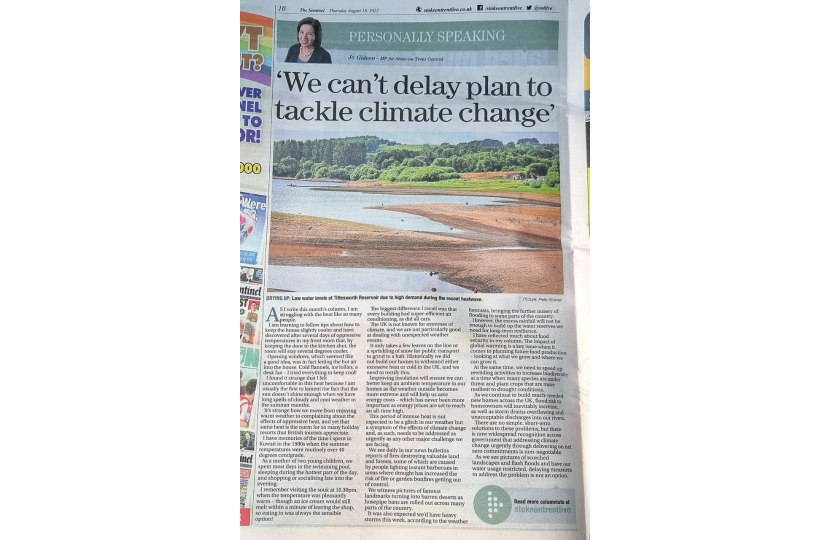
As I write this month’s column like so many people I am struggling with the heat. I am learning to follow tips about how to keep the house slightly cooler, and have discovered after several days of oppressive temperatures in my front room that, by keeping the door to the kitchen shut, the room will stay several degrees cooler. Opening windows, which seemed like a good idea, was in fact letting the hot air into the house. Cold flannels, ice lollies, a desk fan – I tried everything to keep cool!
I found it strange that I felt uncomfortable in this heat because I am usually the first to lament the fact that the sun doesn’t shine enough when we have long spells of cloudy and cool weather in the summer months. It’s strange how we move from enjoying warm weather to complaining about the effects of oppressive heat, and yet that same heat is the norm for so many holiday resorts that British tourists visit and appreciate. I have memories of the time I spent in Kuwait in the 1980s, when the summer temperatures were routinely over 40 degrees centigrade. As a mother of two young children, we spent most days in the swimming pool, sleeping during the hottest part of the day, and shopping or socialising late into the evening. I remember visiting the souk at 10.30pm, when the temperature was a pleasantly warm – though an ice cream would still melt within a minute of leaving the shop, so eating in was always the sensible option! The biggest difference I recall was that every building had super-efficient air conditioning, as did all cars.
The UK is not known for extremes of climate, and we are not particularly good at dealing with unexpected weather events. It only takes a few leaves on the line or a sprinkling of snow for public transport to grind to a halt. Historically we did not build our homes to withstand either excessive heat or excessive cold in the UK, and we need to rectify this. Improving insulation will ensure we can better keep an ambient temperature in our homes as the weather outside becomes more extreme, and will help us save energy costs – which has never been more important as energy prices are set to reach an all-time high.
This period of intense heat is not expected to be a glitch in our weather but a symptom of the effects of climate change, and as such needs to be addressed as urgently any other major challenge we are facing. We see daily in our news bulletins reports of fires destroying valuable land and forests, some of which are caused by people lighting instant barbeques in areas where drought has increased the risk of fire or garden bonfires getting out of control. We witness pictures of famous landmarks turning into barren deserts, as hose pipe bans are rolled out across many parts of the country. By the time this goes to print we will have had some heavy storms according to the weather forecasts, bringing the further misery of flooding to some parts of the country. However, the excess rainfall will not be enough to build up the water reserves we need for long term resilience.
I have reflected much about food security in my column. The impact of global warming is a key issue when it comes to planning future food production – looking at what we grow and where we can grow it. At the same time, we need to speed up rewilding activities to increase biodiversity at a time when many species are under threat, and plant crops that are more resilient to drought conditions.
As we continue to build much-needed new homes across the UK, flood risk to home owners will inevitably increase, as well as storm drains overflowing and unacceptable discharges into our rivers. There are no simple, short-term solutions to these problems, but there is now widespread recognition across government that addressing climate change urgently through delivering on Net Zero commitments is non-negotiable. As we see pictures of scorched landscapes and flash floods, and have our water usage restricted, there can be no doubt that delaying measures to address the problem is not an option.
